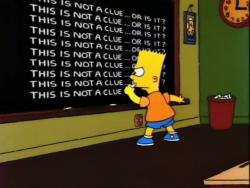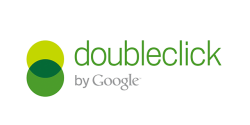
When I began writing the weekly newsletter that became this blog, 20 years ago, the threat of this loss was a primary theme. I asked newspapers and magazines “how hungry are you?” suggesting that if they turned advertisers into business partners, and earned commissions on sales, they could prosper on this medium.
Advertising is just a means to an end. Newspapers sell space for ads, and ads start readers down a sales funnel. Sales are what the buyers of advertisements want. If online publishers could deliver sales, I thought, they would earn all their business partners’ marketing budget.
I saw even then how the Internet could deliver a store’s entire experience, from advertising, through marketing and sales, through the transaction to service and support. It was the publishing opportunity of a lifetime.
No One Took It
At the 1996 Atlanta Press Club Christmas party, Cox Enterprises chair James Cox Kennedy ridiculed my whole notion, insisting he could simply repurpose existing content online as sites like “yall.com,” where he placed entertainment stories.
The next year Google was founded.
The point of Google was never evil. It points people to stories and other content, based on searches initiated by a user. The genius was an “intrinsic” ad model in which ads are presented to these users based on who they are, based on Google’s evolving knowledge of what they care about. Contrast this with the “extrinsic” business model of a newspaper or magazine, which presents ads based on the content people are looking at.
Extrinsic models are more efficient, but intrinsic models became ubiquitous. They let advertisers slice-and-dice the audience, by age, sex, location, political persuasion, ethnicity, interests, tastes, in any way they wanted, paying a low run of network rate for those impressions. Who cared if the ads were inefficient? They were dirt cheap. You could make it up on volume.

In destroying this, Google and its Doubleclick ad agency were following a path that every other search engine before them had tried to walk, from Excite to Altavista to Yahoo. Google was cleaner, with fewer ads, sometimes just text ads, and their relentless focus on search, ironically in the user’s interest (how like a publisher) gave them the victory. Its job then became one of scaling this intimacy, through virtualization and distributed computing technology, built into data centers using cheap components and open source software.
Google Became the Cloud
The cloud enabled something new.
Starting with Google’s own YouTube, then with Netflix, and finally with Amazon, which knew that the key to earning capital with which to scale its operations was to offer its benefits to others, the cloud created new business models for video content.
TV was pleased. Kennedy had also been pleased, in 1996.
TV was pleased for the same reason. They figured this meant they could now prosper by re-purposing their content, licensing and relicensing it to streamers as they had done on cable channels, with DVDs, and to syndicators and videotape before that.
Here is the most important lesson I have learned in my reporting life. Moore’s Law is deflationary, and its impact grows exponentially. As chips become more complex and cheaper, they impact all technology, and then all forms of business, at an ever-increasing rate. Even though a video is a much richer, larger file than mere words, technology is constantly cutting the costs to make it, and the cloud is constantly cutting the cost to deliver it. Better and better gets faster and faster, cheaper and cheaper.

Here’s how. The Internet separated content’s delivery model, its support model, its business model, from its production. This began with simple text. Texting became free, hence tweeting. And links were just text.
Thus, Trump.
With the business model of news destroyed, the search was on for new models, the simplest being the one that existed at the time the Constitution was written, when pamphleteers like Thomas Paine and James Callender ruled. You would just get a rich man, who was interested in political power, to give you the money to publish. You would become their instrument.
Thus, Breitbart.
Writers work for food. Journalists are writers. We toe the line of our publishers. Even when I was starting out, in the late 1970s, at the Houston Business Journal, and later in the 1980s at a host of technology magazines, advertisers held great power. An editor knew the cost of defying the an advertiser, but his or her passion for the reader’s interests could overcome it. The same was true for the publisher, as controversies went up the chain of command.
But it’s also true that many good stories were spiked in the name of business.

This was nothing compared with what happens when the reader’s interest isn’t even in the room, as it isn’t when intrinsic targeting rules and the cost of content is free. Ad rates get driven to the ground. Truth becomes fungible.
At first this was called clickbait. Then it was called fake news. Whatever it was, it was poison in the hands of billionaires backing the new “business model,” which wasn’t based on business at all but political power.
Hence, 2016
Now it’s TV that is in the crosshairs of the Internet. Millions of people are turning it off. Facebook and Google and Twitter are the media companies of the moment. Fox and CNN and MSNBC are fading away, slowly, their audiences aging out and not being replaced.
The Internet has a responsibility to its users, one that does not scale. It has a responsibility to our well-being, and yes, to objective truth. The new masters of our domains get this. Their early efforts are clumsy, aimed at tweaking the technology or providing the equivalent of stickers to celebrities and outlets which show they respect truth.
All this is putting rising walls between ordinary people and their audience. Who’s going to verify www.danablankenhorn.com, and make this piece read, besides me? How Google defines Investorplace, my current publisher, whether they’re seen as a news outlet or a financial site, will define its future. Yahoo Finance republishes its work, and those stories often land in Google News. The same stories, published on the main site, may only be seen by those looking at Google Finance. It makes a huge financial difference.
Real media choices don’t scale. And they’re all headed to video.












